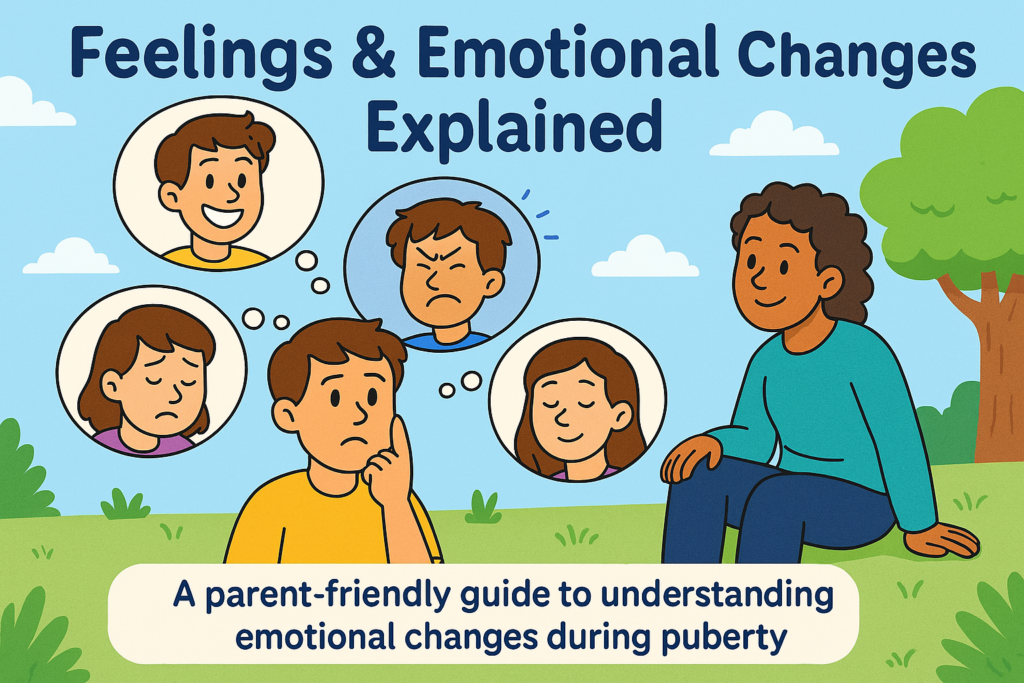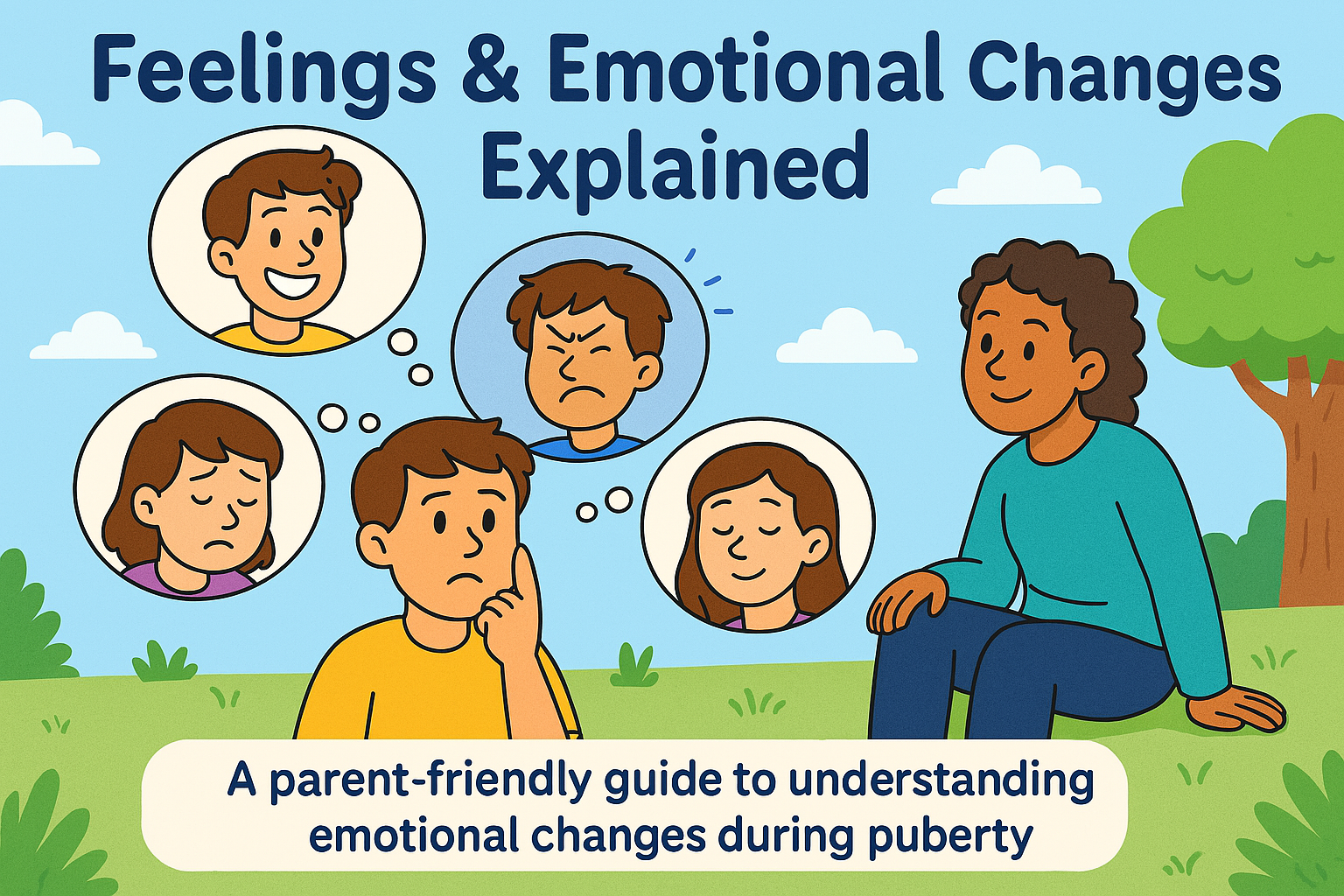Feelings & Emotional Changes Explained
Puberty is often talked about as a time of physical change — growing taller, developing body hair, periods starting, voices deepening — but one of the most challenging and overlooked parts of puberty is how it affects emotions. Many young people are surprised by how suddenly their feelings seem stronger, more unpredictable, or harder to understand. As a parent, it can be difficult to know how to help, especially if your child struggles to express what they are going through. This printable resource, Feelings & Emotional Changes Explained, has been created to give parents clear, simple guidance on the emotional side of puberty.
This sheet focuses on the emotional rollercoaster that many young people experience. Mood swings, low confidence, irritability, strong feelings of embarrassment, and worries about fitting in are all common. These feelings aren’t signs that anything is wrong — they are part of the normal process of growing up. Hormones, brain development, and the pressures of growing independence all play a role in these ups and downs. However, when emotions feel overwhelming, children and teens may not know how to ask for help. Some may act out, while others may withdraw. That is why it’s so important for parents to be prepared.

Members Only
You need to be registered and logged in to access this printable parents guide and other learning resources, games and quizzes. It only costs £1.99
This fact sheet explains in plain, parent-friendly language what kinds of emotional changes are likely to happen, why they happen, and how you as a parent or carer can respond calmly and positively. It gives practical tips on how to help children name their feelings, cope with mood swings, and build self-awareness and confidence during these confusing years. It also helps you recognise signs when your child might need extra help, whether from you, another trusted adult, or a professional.
Our resource is designed for use by all families, including those who home educate. It is fully suitable for parents who may not have had much formal education themselves. There’s no confusing jargon, just plain English explanations and friendly, practical advice. The sheet is gender-neutral and can be used with boys, girls, and children who are questioning their identity.
For home educators, this fact sheet can be used in a variety of ways. You might choose to read it ahead of time to feel more prepared for spontaneous conversations, or you could make it part of a broader lesson about emotions, wellbeing, or personal development. It can also help older learners understand their own feelings better if shared directly.
Above all, this resource encourages parents to be patient, listen well, and model healthy emotional habits themselves. Growing up isn’t just about bodies — it’s about learning to handle the ups and downs of life. This guide will help you support your child through those ups and downs with kindness and confidence.
